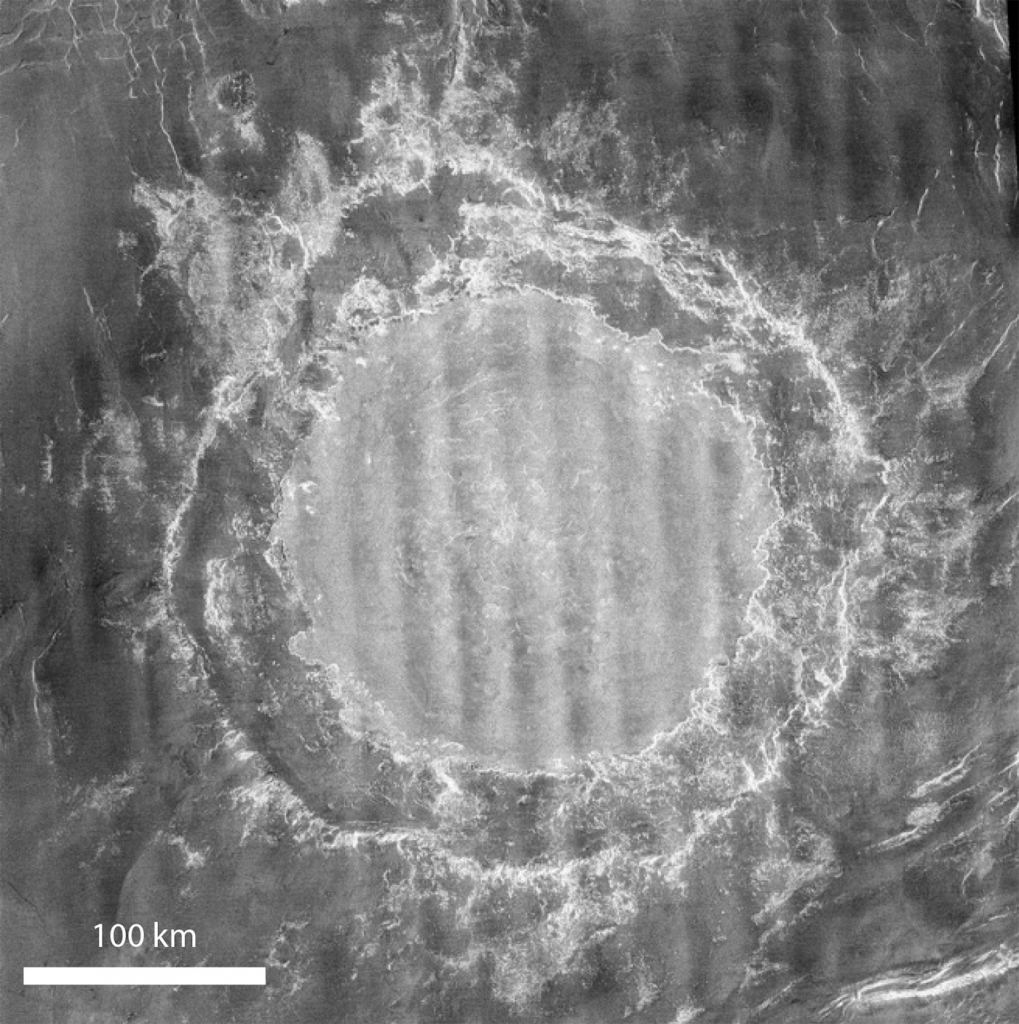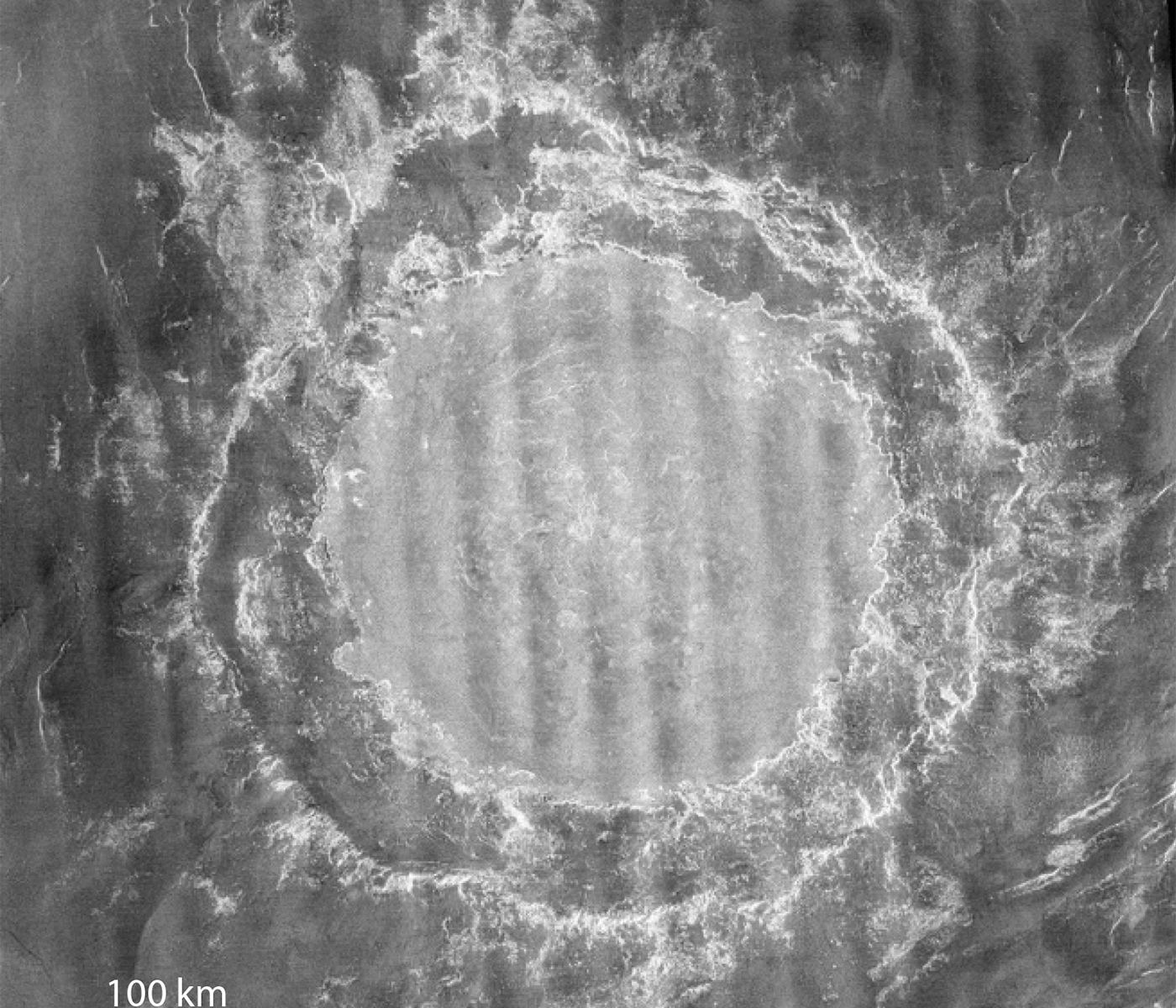Venus may not have had Earth-like tectonic plates or volcanism for the last billion years, according to a new study. A deep look at a giant impact crater on Venus suggests the planet hasn’t experienced any tectonic activity in the recent past, and might be covered with a in a single outer plate. If so, this would essentially rule out any recent volcanic activity on the planet that many consider Earth’s twin.
Researchers from Brown University studied Venus’s largest impact basin, Mead Crater. The basin was created by a large object that smashed into Venus between 300 million and 1 billion years ago, leaving a crater more than 170 miles in diameter. Mead is surrounded by two clifflike faults, which appear as rocky ripples that have been remained unchanged over time. Using computer models, the researchers found that for those rings to be where they are in relation to the central crater, Venus’s lithosphere — its rocky outer shell — must have been quite thick, far thicker than that of Earth.
“This tells us that Venus likely had what we’d call a stagnant lid at the time of the impact,” said Evan Bjonnes, a graduate student at Brown and study’s lead author. “Unlike Earth, which has an active lid with moving plates, Venus appears to have been a one-plate planet for at least as far back as this impact.”
On Earth, most of the world’s volcanoes are found around the edges of tectonic plates, both on land and in the oceans. About 80 to 90 percent of all volcanic eruptions occur where the plates move under another or where they spread apart.

Venus is a difficult planet to study, due to its thick atmosphere, which obscures views of the surface. However, several spacecraft, such as NASA’s Magellan mission which launched in 1989, was able to map Venus’ surface using a cloud-penetrating radar. While radar images show more than 1,000 volcanic structures on the planet, for the most part, they appear to be ancient and inactive. Magellan’s data allowed scientists to conclude that the planet’s volcanic surface has likely remained unchanged over the past several hundred million years, which the new study, published in Nature, agrees with.
But other studies have pointed to plate tectonics being a possibility in Venus’s relatively recent past, such as a paper out in 2020 that concluded that Venus is still volcanically active, and identified 37 volcanic structures that were likely recently active.

But Bjonnes and his colleagues say the thick Venusian lithosphere mean that Venus has been without plate tectonics for as far back as a billion years ago.
Alexander Evans, an assistant professor at Brown and study co-author, said that one compelling aspect of the findings from Mead is their consistency with other features on Venus. Several other ringed craters that the researchers looked at are very similar to Mead.
“I think the finding further highlights the unique place that Earth, and its system of global plate tectonics, has among our planetary neighbors,” Evans said in a press release.

